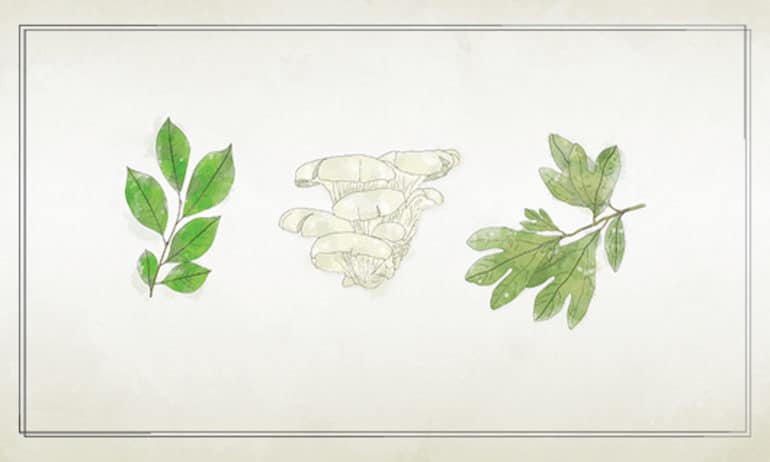Photo courtesy of the Johns Hopkins Center for a Livable Future
Baltimore is home to an active urban foraging community that collects more than 140 different kinds of plants and fungi around from the city, according to a new study by researchers at the Johns Hopkins Center for a Livable Future (CLF). The study reveals how this diverse array of plant and fungal materials can, in some cases, constitute more than 10 percent of an individual’s overall diet, particularly for individuals with lower incomes.
“Foraged foods are free, so the practice could save on costs and provide nutrient-dense foods that might otherwise be unavailable in nearby stores. One-fifth of our study participants told us that at least 10 percent of their diet came from foraged foods, so urban foraging has the potential to fill a significant portion of our plates,” says Brent Kim, co-author of the study and a program officer at CLF.
Foraging involves the gathering of ‘wild’ foods—such as fruits, nuts, mushrooms, and leafy greens—that are not deliberately cultivated for human use. The researchers surveyed 105 individuals who had foraged in Baltimore City or County in the previous year, nearly 15 years after a previous study in the city documented the presence of urban foragers in the United States for the first time. Participants were surveyed about the species, quantity, and preparation of collected materials, frequency and locations of foraging activities, motivations for and barriers to foraging, and contributions of foraged materials to diets.
“This study elevates the voices of foragers, and will be useful for Parks Departments as they consider policy approaches to foraging that support the health of both people and forests,” says Marla Emery, study co-author and Research Geographer at the U.S. Forest Service.
The most frequently reported motivations for urban foraging are enjoyment, economic and health benefits, and connection with nature. Commonly cited barriers include lack of time, knowledge gaps, and food safety concerns. The study builds upon a growing body of research examining urban foraging in the United States and across the globe that demonstrates that foraging may promote positive cultural, ecological, economic, and health outcomes.
According to Kim, “studies have documented numerous health and societal benefits of urban foraging, and the green spaces that provide urban edibles can provide temperature moderation, stormwater mitigation, and other ecosystem services. Harvesting from the wild also means no fertilizing, plowing, or livestock-rearing need to be involved in the making of a meal. Except for the energy involved in processing and preparation, forageables could be the ultimate zero footprint food!”













